Articles on Community College Data
Below is a current list of articles. Others will be added as they are completed, so please stop back regularly. Enjoy reading and contact me if you have comments, questions, or concerns!
 In 2009, President Obama prioritized college completion at community colleges by creating the American Graduation Initiative, known as the College Completion Agenda. Experts and interest groups such as the Community College Research Center and Complete College America began promoting reforms focused on bypassing or eliminating remediation and developmental education, using multiple measures for placement, offering more accelerated models, and increasing pathway options. The result was a unified community college reform movement that quickly swept the nation, and its primary goal was to increase graduation rates. Ten years after the first widescale implementations of reforms took place in the fall semester of 2014, a significant corpus of literature has now been amassed with which to study whether the movement has been successful. Results indicate that piecemeal reforms have been successful in increasing first-year gateway pass rates for some students. However, overall graduation rates have not increased. Most importantly, full implementation of such popular reforms as corequisites has caused the most underserved students to fail out of college at higher rates. For these same students, notably, graduation rates also declined because of the corequisite model. Additionally, numerous studies over the past 2 decades that have shown positive results for remediation and developmental education have not been highlighted in the ongoing national debate. In this critical review of the literature, I provide analyses of the most rigorous research on the most popular and widespread interventions in the community college reform movement. The net outcome is that graduation rates have not increased, and results now indicate that some reforms are harming the most underrepresented students. Therefore, a reasonable policymaker could conclude that remediation and developmental education coursework and programs should be reinstated as options for public 2-year students, and more comprehensive reforms targeting actual barriers should be implemented instead. Click here to read more…
In 2009, President Obama prioritized college completion at community colleges by creating the American Graduation Initiative, known as the College Completion Agenda. Experts and interest groups such as the Community College Research Center and Complete College America began promoting reforms focused on bypassing or eliminating remediation and developmental education, using multiple measures for placement, offering more accelerated models, and increasing pathway options. The result was a unified community college reform movement that quickly swept the nation, and its primary goal was to increase graduation rates. Ten years after the first widescale implementations of reforms took place in the fall semester of 2014, a significant corpus of literature has now been amassed with which to study whether the movement has been successful. Results indicate that piecemeal reforms have been successful in increasing first-year gateway pass rates for some students. However, overall graduation rates have not increased. Most importantly, full implementation of such popular reforms as corequisites has caused the most underserved students to fail out of college at higher rates. For these same students, notably, graduation rates also declined because of the corequisite model. Additionally, numerous studies over the past 2 decades that have shown positive results for remediation and developmental education have not been highlighted in the ongoing national debate. In this critical review of the literature, I provide analyses of the most rigorous research on the most popular and widespread interventions in the community college reform movement. The net outcome is that graduation rates have not increased, and results now indicate that some reforms are harming the most underrepresented students. Therefore, a reasonable policymaker could conclude that remediation and developmental education coursework and programs should be reinstated as options for public 2-year students, and more comprehensive reforms targeting actual barriers should be implemented instead. Click here to read more…
 Policymakers and practitioners latch on to appealing or seemingly intuitive narratives to explain negative community college outcomes and argue for reform. This paper explores two common false narratives that drive current community college reforms. These narratives have gained traction over the past decade and have been accompanied by the widespread elimination or severe reduction of beneficial remediation and developmental education coursework, which is harming millions of current and potential community college students by not allowing them access and opportunity to necessary college coursework. Rather than perpetuating false narratives, policymakers and practitioners should adopt new narratives. The narratives that should be disseminated are that work, family, and finances are the most consequential barriers to at-risk student college completion, and that well-funded, holistic reforms have been the only type of intervention that has been proven to increase student completion for at-risk students at two-year public institutions. Viewing remediation and developmental education through these new narratives will allow states and institutions to maintain and bolster practices that work while addressing actual causes of noncompletion. Click here to read more…
Policymakers and practitioners latch on to appealing or seemingly intuitive narratives to explain negative community college outcomes and argue for reform. This paper explores two common false narratives that drive current community college reforms. These narratives have gained traction over the past decade and have been accompanied by the widespread elimination or severe reduction of beneficial remediation and developmental education coursework, which is harming millions of current and potential community college students by not allowing them access and opportunity to necessary college coursework. Rather than perpetuating false narratives, policymakers and practitioners should adopt new narratives. The narratives that should be disseminated are that work, family, and finances are the most consequential barriers to at-risk student college completion, and that well-funded, holistic reforms have been the only type of intervention that has been proven to increase student completion for at-risk students at two-year public institutions. Viewing remediation and developmental education through these new narratives will allow states and institutions to maintain and bolster practices that work while addressing actual causes of noncompletion. Click here to read more…
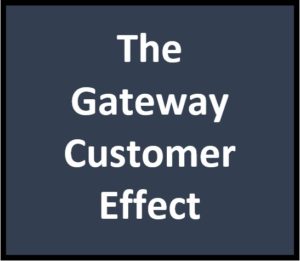 Two market failures inherent in higher education economics and finance practices impede students’ and institutions’ ability to function appropriately within a free-market system, especially when organizations attempt to recruit students as a primary means for increasing enrollment and revenues. Both lead to increased exploitation of students. The first is a type of imperfect competition endemic to education (and to other areas such as health care, prisons, and nursing homes) that, along with its inherent negative externalities, I term the gateway customer effect. The second is the well-known economic concept of imperfect information. In this paper, I discuss each of these higher education market failures, the compound negative effects on students due to their confluence, and recommended changes in marketing, regulations, and funding structures to lessen their harm on vulnerable students. Click here to read more…
Two market failures inherent in higher education economics and finance practices impede students’ and institutions’ ability to function appropriately within a free-market system, especially when organizations attempt to recruit students as a primary means for increasing enrollment and revenues. Both lead to increased exploitation of students. The first is a type of imperfect competition endemic to education (and to other areas such as health care, prisons, and nursing homes) that, along with its inherent negative externalities, I term the gateway customer effect. The second is the well-known economic concept of imperfect information. In this paper, I discuss each of these higher education market failures, the compound negative effects on students due to their confluence, and recommended changes in marketing, regulations, and funding structures to lessen their harm on vulnerable students. Click here to read more…
 Many people, including researchers, look at correlative data and come to the conclusions they wish to believe are correct, even if the data are indicating mixed results. When numbers can be interpreted with broad latitude due to complexity, an apt term for this phenomenon is Rorschach data. Unsurprisingly, most postsecondary data are noisy and complicated. Therefore they often resemble a Rorschach test: That is, what you get out of it is based on what you bring to it. Rorschach data is a type of confirmation bias, which is a bias that occurs when one finds evidence to support a preexisting belief. Worse yet, the very questions many researchers choose to ask, often based on their beliefs, skew what data they collect, pare down, and ultimately analyze. Unfortunately, then, too many studies reflect their authors’ bias. Click here to read more…
Many people, including researchers, look at correlative data and come to the conclusions they wish to believe are correct, even if the data are indicating mixed results. When numbers can be interpreted with broad latitude due to complexity, an apt term for this phenomenon is Rorschach data. Unsurprisingly, most postsecondary data are noisy and complicated. Therefore they often resemble a Rorschach test: That is, what you get out of it is based on what you bring to it. Rorschach data is a type of confirmation bias, which is a bias that occurs when one finds evidence to support a preexisting belief. Worse yet, the very questions many researchers choose to ask, often based on their beliefs, skew what data they collect, pare down, and ultimately analyze. Unfortunately, then, too many studies reflect their authors’ bias. Click here to read more…
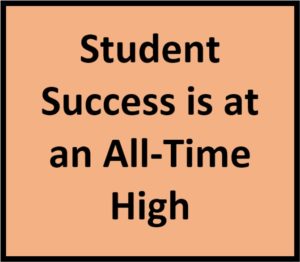 If you read articles on postsecondary education, you know that graduation rates are consistently being characterized as low. People who write about the subject often include terms such as “just” and “only” in titles and sentences before citing certain percentages that appear low to outside observers. Sometimes organizations even refer to these numbers as being ‘a crisis in higher education.’ However, to understand whether current postsecondary graduation rates are high or low, normal or abnormal, one must place them into a more historical and contextual progression. It turns out that most negative interpretations of current completion rates do not accurately reflect contextualized data. These rates are actually much better than they appear. Click here to read more…
If you read articles on postsecondary education, you know that graduation rates are consistently being characterized as low. People who write about the subject often include terms such as “just” and “only” in titles and sentences before citing certain percentages that appear low to outside observers. Sometimes organizations even refer to these numbers as being ‘a crisis in higher education.’ However, to understand whether current postsecondary graduation rates are high or low, normal or abnormal, one must place them into a more historical and contextual progression. It turns out that most negative interpretations of current completion rates do not accurately reflect contextualized data. These rates are actually much better than they appear. Click here to read more…
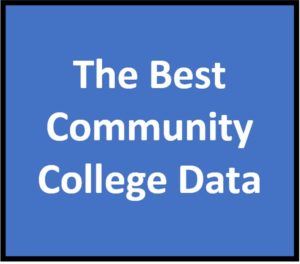 In order to assist educators, researchers, administrators, institutional IR, and others who are interested in finding the most reliable data on community colleges, this article provides summaries of and links to the best data currently available. The three organizations cited here are the sources researchers cite most frequently. One can rely on these organizations’ data to be the best possible information with which to make important decisions. Click here to read more…
In order to assist educators, researchers, administrators, institutional IR, and others who are interested in finding the most reliable data on community colleges, this article provides summaries of and links to the best data currently available. The three organizations cited here are the sources researchers cite most frequently. One can rely on these organizations’ data to be the best possible information with which to make important decisions. Click here to read more…
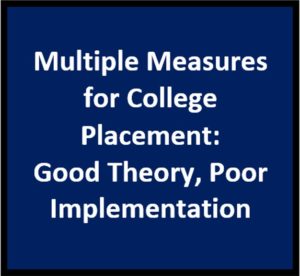 A pattern is developing in the recent community college reform movements sweeping the nation. Researchers publish studies claiming a certain component of higher education is not working well, and in these studies they propose data-based solutions. Due to various reasons, institutions implement those solutions in ways different from the original recommendations. The most recent example of this pattern has to do with college placement. A good theory for reforming placement in college—the use of multiple measures—has largely been implemented improperly, and much of the fault lies with the researchers who have studied the problem and made recommendations, some of which are contrary to their own research. The improper application of this research may negatively affect tens of thousands of students placing into remedial and college-level courses across the nation. Click here to read more…
A pattern is developing in the recent community college reform movements sweeping the nation. Researchers publish studies claiming a certain component of higher education is not working well, and in these studies they propose data-based solutions. Due to various reasons, institutions implement those solutions in ways different from the original recommendations. The most recent example of this pattern has to do with college placement. A good theory for reforming placement in college—the use of multiple measures—has largely been implemented improperly, and much of the fault lies with the researchers who have studied the problem and made recommendations, some of which are contrary to their own research. The improper application of this research may negatively affect tens of thousands of students placing into remedial and college-level courses across the nation. Click here to read more…
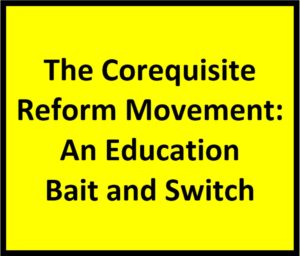 The original Community College of Baltimore County Accelerated Learning Program (ALP) is a comprehensive reform which can modestly improve outcomes in college-level English for remedial students just beneath the placement cutoff. However, there are many important factors one needs to consider before supporting it and the corequisite reform movement as a whole. For example, because some institutions are trying to cut costs, and others want to limit remediation because they view it as ineffective or a barrier, they are using ALP as a basis for implementing versions of corequisites that are nothing more than placing remedial students into college-level courses and adding one lab hour as the sole means of support. These variations are not based on sound research, and therefore the reform resembles a bait-and-switch scheme. Click here to read more…
The original Community College of Baltimore County Accelerated Learning Program (ALP) is a comprehensive reform which can modestly improve outcomes in college-level English for remedial students just beneath the placement cutoff. However, there are many important factors one needs to consider before supporting it and the corequisite reform movement as a whole. For example, because some institutions are trying to cut costs, and others want to limit remediation because they view it as ineffective or a barrier, they are using ALP as a basis for implementing versions of corequisites that are nothing more than placing remedial students into college-level courses and adding one lab hour as the sole means of support. These variations are not based on sound research, and therefore the reform resembles a bait-and-switch scheme. Click here to read more…
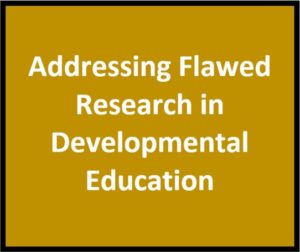 Much of recent research in postsecondary developmental education leaves the distinct impression that most remedial courses in community colleges are unsuccessful in helping students and that they should be entirely overhauled. Legislators and administrators are now taking these recommendations very seriously and are ready to cut programs that are ineffective out of their budgets. However, if this research is read in depth, it is clear the data do not completely support such claims of inefficacy. In fact, if one were to use solely the data from these studies, one could conclude that indeed community colleges are at least somewhat successful with their current developmental programs. The interpretation depends on how developmental education is defined, how success is defined, and how data is interpreted within a larger context. Click here to read more…
Much of recent research in postsecondary developmental education leaves the distinct impression that most remedial courses in community colleges are unsuccessful in helping students and that they should be entirely overhauled. Legislators and administrators are now taking these recommendations very seriously and are ready to cut programs that are ineffective out of their budgets. However, if this research is read in depth, it is clear the data do not completely support such claims of inefficacy. In fact, if one were to use solely the data from these studies, one could conclude that indeed community colleges are at least somewhat successful with their current developmental programs. The interpretation depends on how developmental education is defined, how success is defined, and how data is interpreted within a larger context. Click here to read more…
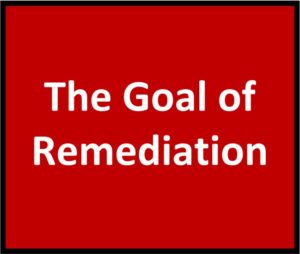 What are college remedial courses supposed to accomplish? The answer to this question is extremely important because it determines the benchmark for what is considered ‘success’ for these courses. When remediation does not reach the accepted level of ‘success,’ then in many cases it is cut, or it is reformed to such an extent that it harms students. Unfortunately, many researchers and policy experts have set the goal for remediation to be more strenuous than what should be expected based on what remedial courses are designed to cover. In fact, their determination runs counter to decades of theory and practice by experts in the field. We need to investigate what remediation’s goal should be, what some researchers believe it is, and why it matters. Click here to read more…
What are college remedial courses supposed to accomplish? The answer to this question is extremely important because it determines the benchmark for what is considered ‘success’ for these courses. When remediation does not reach the accepted level of ‘success,’ then in many cases it is cut, or it is reformed to such an extent that it harms students. Unfortunately, many researchers and policy experts have set the goal for remediation to be more strenuous than what should be expected based on what remedial courses are designed to cover. In fact, their determination runs counter to decades of theory and practice by experts in the field. We need to investigate what remediation’s goal should be, what some researchers believe it is, and why it matters. Click here to read more…
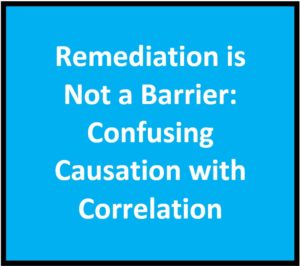 “For nearly a decade now the idea that remedial courses are a barrier has taken over higher education. Many educators, news articles, policy experts, advocacy groups, research centers, and legislators repeat this claim to the point that no one seems to question it. And because this sentiment is becoming accepted as true, even by some educators in the field, remediation is being restricted, excessively reformed, or cut entirely. It is clear that the data underlying this claim must be explored further. Without this analysis, we run the risk of claiming that since remedial students take remedial courses first, and these students have low graduation rates, it must be because of those remedial courses. This may be confusing causation with correlation…” Click here to read more…
“For nearly a decade now the idea that remedial courses are a barrier has taken over higher education. Many educators, news articles, policy experts, advocacy groups, research centers, and legislators repeat this claim to the point that no one seems to question it. And because this sentiment is becoming accepted as true, even by some educators in the field, remediation is being restricted, excessively reformed, or cut entirely. It is clear that the data underlying this claim must be explored further. Without this analysis, we run the risk of claiming that since remedial students take remedial courses first, and these students have low graduation rates, it must be because of those remedial courses. This may be confusing causation with correlation…” Click here to read more…
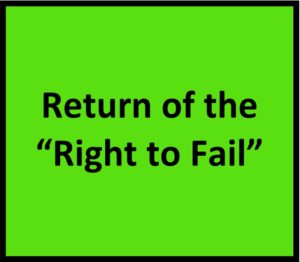 “Proponents of various reforms—acceleration, corequisites, single “multiple measures” that lower the placement bar to high school GPAs of 2.6 or higher, fast-tracking, modularization—believe that once most remedial courses are eliminated or severely reduced, and most students start in college-level courses instead (‘the default placement for the vast majority of students’ is college-level), then more remedial students will be able to graduate. The data do not support this assertion. What these decisions do instead, then, is to essentially put into practice the decades-old philosophy of the “right to fail.” This short-term approach may in fact be harming hundreds of thousands of at-risk students across the nation while not improving graduation rates…” Click here to read more…
“Proponents of various reforms—acceleration, corequisites, single “multiple measures” that lower the placement bar to high school GPAs of 2.6 or higher, fast-tracking, modularization—believe that once most remedial courses are eliminated or severely reduced, and most students start in college-level courses instead (‘the default placement for the vast majority of students’ is college-level), then more remedial students will be able to graduate. The data do not support this assertion. What these decisions do instead, then, is to essentially put into practice the decades-old philosophy of the “right to fail.” This short-term approach may in fact be harming hundreds of thousands of at-risk students across the nation while not improving graduation rates…” Click here to read more…
 “I attended a conference on higher education several years ago in which there was a session on how to increase the number of students at colleges and universities. In a room of well over 100 people in education, most of whom were administrators, no one batted an eye when the moderator made the assumption that students were customers. I raised my hand and asked, ‘Are we sure that students are in fact customers? Because the last time I checked, I didn’t need to take a test before I ordered a burger.’ Everybody chuckled, and then the president of a university spoke up and said something to the effect of, ‘That’s a fair point. However, students are customers because we rely on them for a great deal of revenue.’ The case was closed, and everyone moved on with the discussion about how to attract more customers…” Click here to read more…
“I attended a conference on higher education several years ago in which there was a session on how to increase the number of students at colleges and universities. In a room of well over 100 people in education, most of whom were administrators, no one batted an eye when the moderator made the assumption that students were customers. I raised my hand and asked, ‘Are we sure that students are in fact customers? Because the last time I checked, I didn’t need to take a test before I ordered a burger.’ Everybody chuckled, and then the president of a university spoke up and said something to the effect of, ‘That’s a fair point. However, students are customers because we rely on them for a great deal of revenue.’ The case was closed, and everyone moved on with the discussion about how to attract more customers…” Click here to read more…
 “A group of remedial students were required to enroll in block schedules full-time, to meet with counselors two times a month, to take a non-credit first-year seminar, to have tutoring, and to complete remedial courses early on in their education. In addition, they were given free tuition over and above what their financial aid offered, and they received free transportation, free textbooks, and several free social events. All told, the program costs the college about $5000 per student per year over and above what is already spent. The results of this investment are astounding…”
“A group of remedial students were required to enroll in block schedules full-time, to meet with counselors two times a month, to take a non-credit first-year seminar, to have tutoring, and to complete remedial courses early on in their education. In addition, they were given free tuition over and above what their financial aid offered, and they received free transportation, free textbooks, and several free social events. All told, the program costs the college about $5000 per student per year over and above what is already spent. The results of this investment are astounding…”